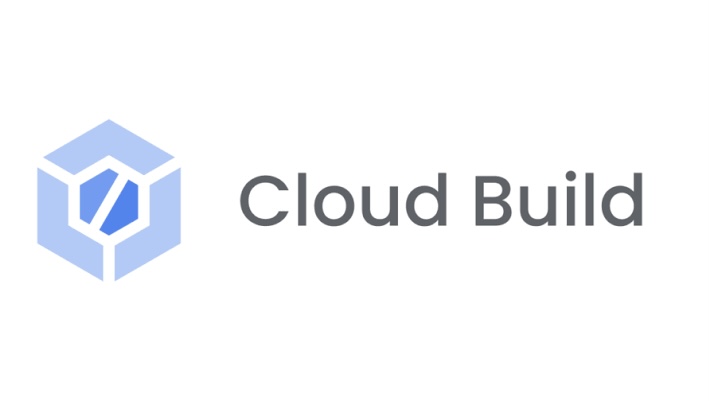24. CI/CD Automation with Cloud Build
 Mileke Kolawole
Mileke Kolawole
Introduction
In our previous article, we discovered the power of automation in software delivery. Now, let's dive into Cloud Build, Google Cloud's solution for orchestrating those automated CI/CD workflows.
What is Cloud Build?
Cloud Build is a fully managed service within Google Cloud Platform that executes your build processes in a serverless environment. It handles tasks like compiling or packaging code, running tests, and creating deployable artifacts (like container images). Cloud Build integrates seamlessly with other GCP tools, making it an essential part of your CI/CD toolkit.
Why Cloud Build for CI/CD?
Automation at its Core: Cloud Build eliminates repetitive manual steps, letting you focus on innovation instead of infrastructure wrangling.
GCP Integration: Connect flawlessly with tools like Cloud Source Repositories to trigger builds automatically based on code changes.
Flexibility: Cloud Build works across a wide range of languages and frameworks, adapting to various project types and team preferences.
Scalability: Handle anything from small side projects to large-scale production deployments.
Let's explore the core concepts that make Cloud Build tick.
Core Concepts
1. Triggers
Triggers are the heart of automation in Cloud Build. They determine when and how your build pipelines start, ensuring your development processes are streamlined and responsive.
How Triggers Power Your CI/CD Pipeline
Seamless Workflow: Triggers link events (code changes, time schedules) to actions (building, testing, deploying). This eliminates manual steps and keeps your codebase in a ready-to-deploy state.
Efficient Updates: Code change triggers ensure new features or fixes promptly enter your automated pipeline.
Regular Maintenance: Scheduled triggers are perfect for tasks like regular test runs or dependency updates, maintaining code health over time.
Control and Flexibility: Manual triggers let you retain control when needed for specific builds or experimentation.
Common Trigger Types
Code Changes: Build pipelines activate in response to pushes to your version control system (e.g., Cloud Source Repositories).
Scheduled Builds: Execute builds on a recurring basis (e.g., nightly) for periodic tasks.
Manual Execution: Initiate builds on-demand from the Google Cloud Console or command line.
- Build Configuration (
cloudbuild.yaml)
Think of the cloudbuild.yaml file as a set of instructions for Cloud Build. It outlines the steps needed to transform your source code into something ready for deployment. Let's break down how it works:
Build Steps: The Heart of the Process Each step in your
cloudbuild.yamlrepresents a specific action. Common tasks include:Compiling your code (using language-specific tools).
Running tests to ensure everything works as expected.
Creating a container image to package your application for easy deployment.
Cloud Builders: Cloud Builders are pre-packaged tools that perform those common build tasks. Cloud Build provides a wide range of them (for building Java applications, running Node.js scripts, etc.). You'll tell Cloud Build which Cloud Builders to use in your
cloudbuild.yamlfile.Flexibility: If needed, you can also create custom container images for specialized tasks and use them within your build steps.
A Simple Scenario
Imagine you have a simple Python application. A very basic cloudbuild.yaml for it might look like this:
steps:
# Step 1: Use a Python Cloud Builder to install dependencies
- name: 'python'
args: ['pip', 'install', '-r', 'requirements.txt']
# Step 2: Run your Python tests
- name: 'python'
args: ['pytest']
# Step 3: Use a Docker Builder to create a container image
- name: 'gcloud/cloud-builders/docker'
args: ['build', '-t', 'gcr.io/$PROJECT_ID/my-image', '.']
3. Build Steps and Cloud Builders
Remember, each step in your cloudbuild.yaml file defines an action within your build pipeline. But how are those actions carried out? This is where Cloud Builders come in.
What Are Cloud Builders?
Think of them as pre-packaged containers that include common tools and language environments. They a wide range of standard builders for: compiling code (Java, Go, Python, etc.), running tests (various frameworks), creating container images (Docker) and much more!
Why Use Cloud Builders?
Convenience: They eliminate the need to set up complex build environments yourself.
Consistency: Cloud Builders ensure your builds are reproducible across different machines and environments.
Community Power: You can even find community-maintained builders for specialized tasks.
Customization: If needed, you have the power to create your own custom container images and use them as builders for unique tasks.
Example: Building a Node.js Application
steps:
- name: 'gcloud/cloud-builders/npm' # A standard Cloud Builder for Node.js
args: ['install'] # Installs dependencies
- name: 'gcloud/cloud-builders/npm'
args: ['test'] # Runs tests
Hands-on walkthrough
You can use this Youtube video as a guide on how to use Cloud Build to create a fully managed CI/CD platform.
Further applications of Cloud Build
The core concepts and simple example we've covered provide a solid foundation. However, Cloud Build's true power lies in its adaptability and extensibility. Here's a taste of what you can explore:
Complex Workflows: Build multi-stage pipelines with steps for testing, packaging, deploying to different environments (staging, production), and more.
Custom Builders: For highly specialized tasks, create your own container images packed with the tools you need, extending what Cloud Build can do.
Artifact Storage: Seamlessly integrate Cloud Build with Artifact Registry or Container Registry to manage build outputs like container images.
Deployment Automation: Connect Cloud Build to tools like Cloud Deploy for fully automated CI/CD to various GCP environments .
Pub/Sub Integration: Use Cloud Build triggers with Pub/Sub for complex event-driven scenarios (builds triggered by events outside of version control).
Teaser: From Build to Deployment
You've harnessed the power of Cloud Build to automate builds and tests. Now, let's take the next step and deploy your applications effortlessly with Cloud Deploy. Get ready to create end-to-end CI/CD pipelines that deliver new features to your users faster and more reliably than ever before.
Subscribe to my newsletter
Read articles from Mileke Kolawole directly inside your inbox. Subscribe to the newsletter, and don't miss out.
Written by
